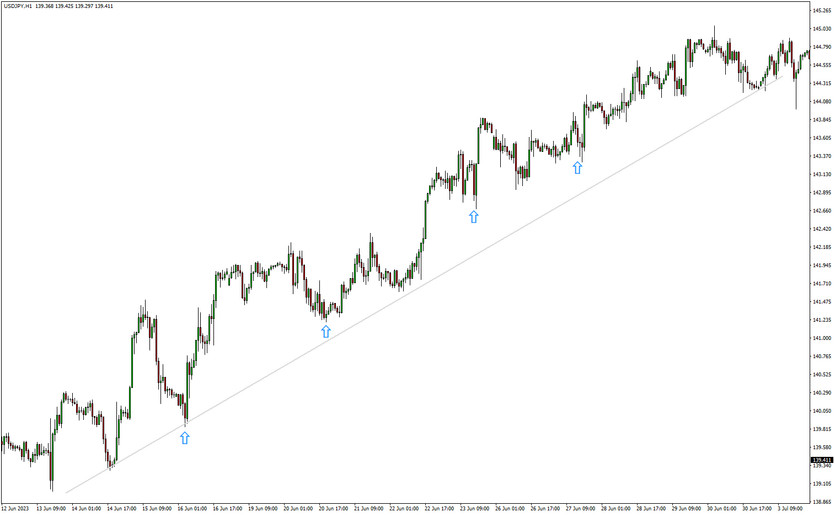Prologue: Decoding Market Pullbacks for Trading Opportunities
In the complex world of technical analysis, market pullbacks are veritable gold mines of trading opportunities. Traders are often seduced by the potential profit that pullbacks promise, following a substantial upward or downward market movement. Yet, capitalizing on this classic strategy can prove to be more challenging than it appears.
Imagine purchasing a security during a market dip or short selling into resistance. The asset can continue its trend, leading your position towards a substantial loss. Alternatively, the security may stagnate, leaving you idle and missing out on other lucrative trades.
What does it take to consistently secure profits with pullback strategies? What expertise must you acquire, when should you decisively seize your profits, and how can you tactfully concede you were wrong without taking a severe financial hit? By exploring several historical examples, this comprehensive guide aims to shine a light on these critical questions.
Key Aspects to Consider
- Market pullbacks are an opportunity to enter a long position when the security's price is at a discount.
- A pullback represents a brief slump in price, generally followed by a price recovery.
- In this guide, we delve into various fundamental strategies to exploit market pullbacks effectively.
The Anatomy of Market Pullbacks
To predict with precision when a pullback will turn around, a substantial trend must first be present. This ensures other market participants are ready to back your position, contributing to the realization of your potential profit. Securities reaching new peaks or plummeting to new lows, particularly when they considerably exceed a technical breakout or breakdown level, are ideal candidates for this strategy.
A significant uptrend or downtrend, accompanied by above-average trading volume, is noteworthy. Particularly so when the trending security experiences a swift reversal after peaking or bottoming out, without accumulating a considerable consolidation or trading range. This scenario is desirable because an intervening range could otherwise limit the potential profit during a subsequent bounce or rollover.
The Journey of ABC, Corp.
Consider a scenario where the shares of ABC, Corp. break free from a three-month trading range with a higher than average trading volume. The shares then momentarily pause, receding nearly 50% from the preceding uptrend. Here, they find robust support at the breakout level and the 50-day Exponential Moving Average (EMA). A midday shift presents a small Doji candlestick, signaling a reversal. This reversal gains momentum over the next few days, elevating over two points to test the prior high. Following this, the shares resume their strong uptrend, marking a series of multi-year highs.
Pinpointing the Perfect Entry Price: A Tactical Guide for Tactical Traders
Identifying the optimal entry point for any trade is an art that merges observation, calculation, and a deep understanding of market dynamics. In the context of a pullback, this moment presents itself as the market temporarily retreats before it regains its primary trend. However, understanding and anticipating this moment necessitates a firm grasp on a concept known as cross-verification.
Once a pullback begins, the trader should seek instances of cross-verification, which serve as crucial indicators for a potential market reversal. These instances essentially represent constricted price ranges where multiple types of support or resistance align. When such zones are tight and exhibit a variety of support or resistance types lining up perfectly, they suggest a swift market reversal and a strong push in the direction of the primary trend.

In the pursuit of a perfect entry price, consider the following key principles:
-
Watch for the Confluence of Support or Resistance: The convergence of different types of support or resistance in a narrow price zone can indicate a high probability of a market reversal. For instance, a pullback to a breakout through horizontal highs that simultaneously aligns with a critical Fibonacci retracement and an intermediate moving average, such as the 50-day EMA, significantly amplifies the chances of a successful pullback trade.
-
Adapt and React in Less Optimal Conditions: Market conditions are not always ideal, and traders must know how to navigate less favorable scenarios. Under these circumstances, traders can still capitalize on pullbacks by gradually scaling into conflicting price levels. This approach requires treating support and resistance more flexibly, as bands of price activity rather than strict lines.
-
Prioritize Price Action Over Rigidity: In the world of trading, adaptability trumps rigidity. While having a concrete trading plan is necessary, it’s equally important to be open to adjusting it based on evolving market conditions. Following price action closely allows traders to modify their approach, optimizing their chances of finding the perfect entry price.
As the markets unfold and the pullback enters its crucial stages, the role of the trader transforms from a passive observer to an active participant. It's during these stages that the trader's insight, experience, and understanding of cross-verification zones play a crucial role in making or breaking the trade.
Remember, trading is a game of probabilities, not certainties. No strategy can guarantee success every time. However, by understanding the principles outlined above and applying them effectively, traders can significantly increase their chances of consistently finding the perfect entry price, ultimately making the most out of pullback opportunities.
Capitalizing on Opportunities - The Profit Strategy
Upon securing a trade, traders should actively aim to capture profits as the security starts its recovery. Customize your risk management strategy to suit the retracement pattern by implementing Fibonacci grids over both the last wave of the primary trend and the entire pullback wave. This technique can unveil harmonic price levels where the two grids intersect, revealing hidden barriers.
It's also crucial to monitor gaps and small trading ranges during pullback plays as they may signal potential counter swings. The most favorable exits typically occur when the price moves rapidly in your favor, reaching an evident barrier. This could include the last major swing high in an uptrend or swing low in a downtrend.
Implementing Robust Stop Loss Strategies
Unsuccessful trades with pullback plays often occur due to one of three reasons: premature entry during the countertrend wave, an impeccable entry but an unexpected continuation of the countertrend, or a reversal that starts promisingly but then aborts due to inadequate risk management.
As you gain trading experience, you'll notice that many pullbacks offer logical entries at various levels. The longer you hold out and the deeper the pullback goes without breaking the technicals, the easier it becomes to place a stop just behind a significant cross-verification level. Although this strategy might cause you to miss perfect reversals at intermediate levels, it also maximizes profits and minimizes losses.
Epilogue: Pullbacks - The Final Word
Breakouts and breakdowns often return to contested levels, retesting new support or resistance after the initial trend wave loses momentum. Pullback positions taken close to these price levels offer excellent reward-to-risk profiles, lending support to a diverse array of swing trading strategies.





